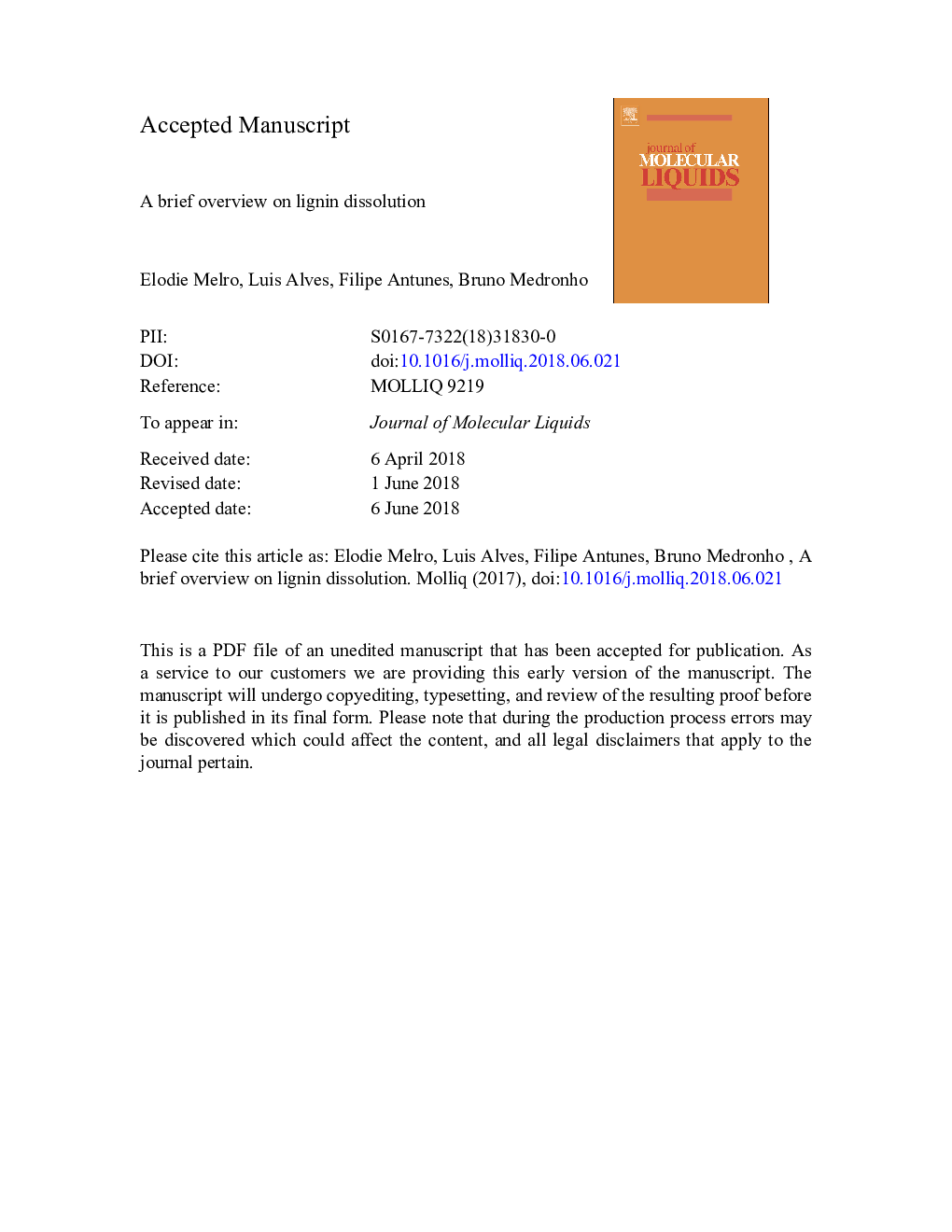| Article ID | Journal | Published Year | Pages | File Type |
|---|---|---|---|---|
| 7842008 | Journal of Molecular Liquids | 2018 | 19 Pages |
Abstract
During the last decades, the demand for sustainable and renewable resources has greatly increased. It is clear that biomass exploitation in general, and lignin in particular, will play a key role toward a sustainable and environmental prosperous society. Lignin is a three-dimensional amorphous polymer, mainly found in the cell wall of woody tree species, quite abundant and renewable natural bioresource capable to become in the near future a usual chemical feedstock for many materials of added value. However, its physicochemical understanding is still poor in comparison to other polymers, most likely due to its complexity. Its dissolution, as an often required first step for several production processes and applications, is typically complicated. Nevertheless, a wide variety of solvents for lignin have already been developed and, among them, organic solvents, ionic liquids and deep eutectic solvents are particularly relevant. In this brief treatise, the general features of lignin dissolution are reviewed as the drawbacks and virtues of lignin solvents and appropriate dissolution conditions.
Related Topics
Physical Sciences and Engineering
Chemistry
Physical and Theoretical Chemistry
Authors
Elodie Melro, Luis Alves, Filipe E. Antunes, Bruno Medronho,
